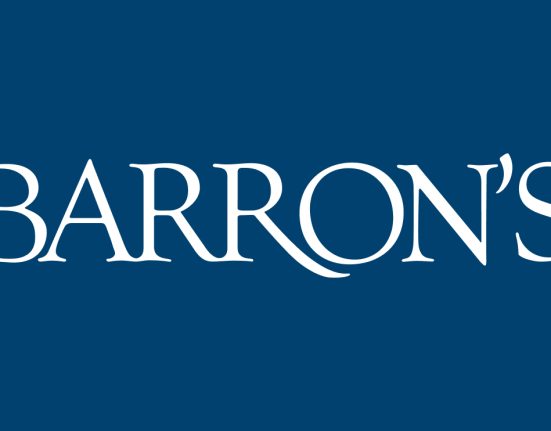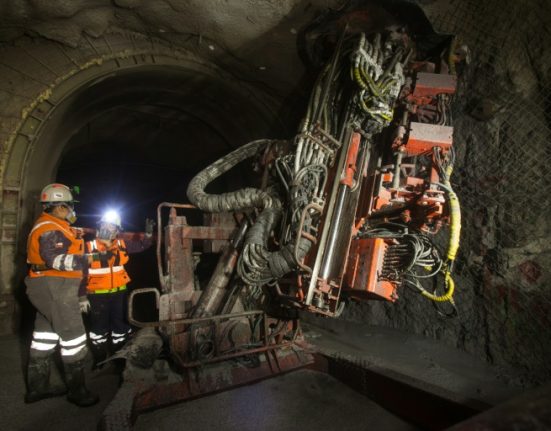In the complex world of European finance, the European Investment Fund (EIF) stands out as a cornerstone of innovation and strategic growth, ensuring all member state Small and Medium-sized Enterprises (SMEs) have robust access to venture capital and private equity.
I’ve met with Joel Wajsberg, a Private Equity Mandate Officer at European Investment Fund (EIF), in Vienna at the Zero to One Hundred Conference where he was one of the panellists discussing the current LP appetite for VC fund investments specifically targeting Europe’s DACH region.
After his dynamic panel and during our conversation, Mr. Wajsberg provided profound insights into the fund’s dual mandate: to generate risk-adjusted returns while nurturing the development of businesses across a continent, celebrated for its diversity and economic dynamism. Despite a buzzing ecosystem, Wajsberg points to a persistent distance that European institutional investors keep from the high-risk allure of venture capital, often sidelining domestic VC opportunities for the perceived safety of established markets, primarily in the US.
The narrative, however, is nuanced with the EIF’s strategic interventions in market-building efforts, particularly in regions where the entrepreneurial spirit is stifled by the scarcity of resources. Initiatives like the Portuguese VC initiative, and the EIF’s engagements in the Baltics and Croatia, illustrate a concerted effort to infuse vitality into nascent markets, fostering environments where innovation is not just nurtured but celebrated.
As Europe stands on the cusp of a new era in venture capital, the conversation around valuations and investor appetite becomes increasingly pertinent. Wajsberg’s insights hint at a market in flux, where internal financing rounds prevail, and the quest for a new equilibrium in valuations persists. As the EIF navigates this complex terrain, its role transcends capital infusion, embodying a vision for a thriving European venture ecosystem that is diverse, inclusive, and ripe with opportunity.
Striking the fine balance of EIF’s dual purpose
At the heart of the European Investment Fund’s (EIF) mission is a unique dual-purpose approach that distinguishes it from its private counterparts. Mr.l Wajsberg elaborates on this strategy, stating: “We sit at the intersection between public policy and investments on the ground,” highlighting the EIF’s commitment to not only seek risk-adjusted returns through financial instruments but also to ensure the fulfilment of European public policy goals. This approach enables the EIF to support the growth of European SMEs by providing them access to capital, thereby allowing them to thrive domestically without the need to seek external funding. By investing across various sectors such as venture capital, private equity, private credit, and infrastructure within the EU’s diverse market landscape, the EIF actively contributes to the sustainability and development of the European economy, tailoring its investments to the specific needs and maturity levels of different regions.
The EU has success stories – and it should communicate them more
Amid discussions on Europe’s ability to showcase its achievements, Wajsberg explains a nuanced perspective on the continent’s venture capital landscape. He acknowledges a historical lag in comparison to North America’s vibrant narrative, particularly that of Silicon Valley’s dominance in entrepreneurial success and venture capital prowess. Wajsberg points out, “We have made huge leaps in terms of educating what entrepreneurship takes. We now have venture capital funds across all of the EU 27 member states that are up and running,” highlighting a significant evolution within Europe’s venture capital ecosystem. This progression, fueled in part by the EIF’s strategic engagements, marks a pivotal shift towards a more robust and highly localised infrastructure capable of nurturing innovative startups that traditionally might not meet the stringent requirements of conventional financing, such as bank loans. Wajsberg’s insights underscore a transformative phase in European venture capital, hinting at a future where Europe’s successes are not only recognized internally but also resonate on a global scale, challenging the narrative of its historical reticence in promoting its achievements.
Why are Europe’s corporate allocators investing in US based VC funds over domestic ones?
Addressing the conundrum of why institutional investors may exhibit concerns towards the growing European venture capital landscape, Wajsberg offers a multifaceted explanation. He posits, “I think there’s a lot of untapped talent, a lot of untapped opportunities domestically within Europe. It’s our challenge to make sure that these institutional players have the ability to go into these funds.” This statement encapsulates the crux of the issue: despite Europe’s vibrant and diverse markets, the prevailing investment patterns reflect a cautious approach, often favouring established American funds due to their historical track records and the logistical ease of managing fewer, larger investments. Wajsberg’s insights reveal a critical intersection where cultural diversity and market fragmentation in Europe, while inherently valuable, pose practical challenges for allocators seeking significant investment opportunities. He also explains that EU funds perform equally well if not better than US counterparts, but the bravado and ease of having a single large LP ticket keeps the allocators with the established US based VC funds. This scenario underscores a pivotal moment for Europe’s venture capital sector, suggesting a need for strategic communication and engagement to showcase the continent’s successes and untapped potential, thereby attracting institutional investment that recognizes the comparable, if not superior, prospects within the European Union.
Market building exercises: EIF plays the most powerful role in the early days of creating a new ecosystem
One of the EIF’s biggest tasks is building a VC ecosystem from the ground up – and with recent examples it shows that the blueprint works well – and fast. Highlighting the EIF’s strategic interventions in regions like the Baltics, Portugal, and Croatia, Wajsberg notes, “Well, I think that’s exactly the role of the EIF and where the backing of the EIF makes a real difference.” This acknowledgment sheds light on the EIF’s targeted efforts to infuse vitality into markets characterised by resource scarcity and limited access to capital for fast growing entrepreneurs. Through initiatives like the Baltic Innovation Funds and the Portuguese Venture Capital Initiative, the EIF has not only catalysed the growth of local venture ecosystems but also instilled a sense of viability and optimism among young, first-time founders. Wajsberg’s reflections on the EIF’s dual role as a market pillar and a counter-cyclical investor reveal a nuanced strategy aimed at stabilising and invigorating private markets during fluctuating economic climates. By fostering environments where innovation can flourish without the looming threat of capital dearth, the EIF’s endeavours exemplify a commitment to long-term, sustainable development that resonates well beyond immediate commercial successes, ultimately contributing to the broader societal embrace of entrepreneurship within Europe.
CE Europe still gaining momentum – and has much more to give
The dynamic shift towards recognizing Central and Eastern Europe’s latent potential in the venture capital ecosystem is gaining momentum, as highlighted by Wajsberg. He insightfully remarks, “A lot of countries in Central Europe are still overlooked and have huge potential to offer,” shedding light on a region ripe with untapped opportunities and burgeoning talent. This observation comes against a backdrop of evolving ecosystems within the European Union, where cost arbitrage and a rich human capital index stand out as compelling advantages for businesses looking to innovate and expand. Wajsberg’s commentary not only underscores the strategic value of these markets but also emphasises the critical role of nurturing and supporting the infrastructure — from fund managers to incubators — that will catalyse the growth of innovative enterprises. As Europe continues to navigate through its industrial and entrepreneurial evolution, the spotlight on these emerging regions forecasts a promising horizon for venture capital investments, challenging the traditional narratives and opening new pathways for economic growth and innovation.
Supporting first time GPs but simultaneously raising the bar
In the realm of EU’s VC, the pathway for first-time General Partners (GPs) to launch their own funds often entails navigating a labyrinth of financial and operational challenges. Mr. Wajsberg sheds light on an intriguing facet of the venture ecosystem, noting, “The European Investment Fund is one of the very few entities that can offer [first-time GPs] to start their own fund without their own sizable commitment.” A typical private family office may request around 10% of the GP commitment. However, the EIF takes into consideration other criteria in order to ensure the best possible alignment of interest between the LPs and the GP – including the one that earning such money in selected markets may not be as realistic. “We look at each case within the context, whilst others may have a fixed percentage figure in mind – we are able to consider different proposals just because we also want new teams to emerge” he concluded. This statement underscores a unique proposition by the EIF, distinguishing itself from traditional private family offices that typically demand substantial personal investments from GPs. This approach not only democratises the entry into fund management but also poses a reflective question on the evolving dynamics of venture capital in Europe. As the EIF adopts a more selective stance towards supporting first-time GPs, it prompts a broader contemplation on the criteria and support mechanisms necessary to cultivate a resilient and innovative venture capital landscape that can nurture the next wave of entrepreneurial talent across Europe.
Valuations remain a complex puzzle and no one has a crystal ball to see how close we are to the bottom
The valuation landscape presents a complex puzzle. Amid a fluctuating market, Wajsberg offers a candid assessment: “We continue to see many internal financing rounds, which may be an indication that there’s still some way to go.” This observation reflects a broader sentiment of cautious optimism, hinting at a recalibration of expectations and valuations. As financing rounds increasingly rely on internal investors, the absence of fresh capital injections from new investors suggests a potential disconnect between current valuations and market realities. This scenario invites a deeper examination of the venture capital model in Europe, prompting stakeholders to ponder the sustainability of high valuations and the pathway towards achieving a more balanced and realistic valuation framework that aligns with both market trends and investor appetites. As the European venture ecosystem continues to mature, the dialogue around valuations and investment strategies remains a critical focal point for both seasoned investors and emerging startups alike.
In conclusion, the European venture capital ecosystem stands at a crossroads, marked by immense potential and notable challenges. The insights gleaned from the EIF’s strategies and Mr. Wajsberg’s reflections offer a roadmap for navigating this complex terrain. Embracing diversity, fostering adaptability, and rekindling investor appetite for risk are imperative for cultivating a thriving European venture ecosystem. As Europe ventures forward, the collective efforts of policymakers, investors, and entrepreneurs will be pivotal in realising the vision of a vibrant, innovative, and sustainable European economy.





